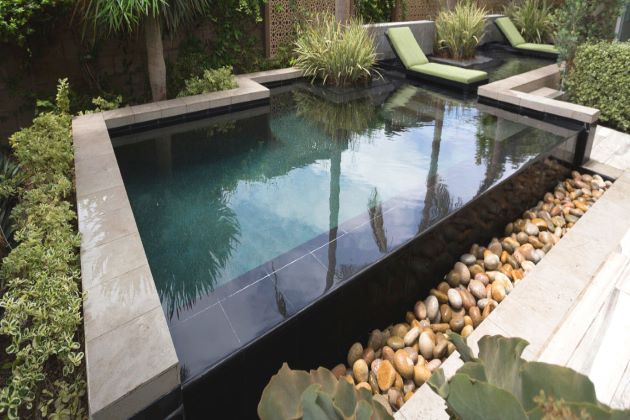Shocking a pool is a regular part of pool maintenance during the swimming season. Many pool owners and pool service professionals shock a pool during spring opening and other times of the year when they want to “super-chlorinate” the water. Shocking a pool will destroy bacteria, algae and organic waste that regular chlorination may have missed. Enjoy safe, clear water with this regular maintenance technique.
Free Chlorine vs. Combined Chlorine
Before treating the pool water, it is important to understand the difference between Free and Combined Chlorine.
Free Chlorine
The effective chlorine available to sanitize the pool water.
Combined Chlorine
Have you ever smelled that “chlorine smell” while visiting a public pool or water park? This notorious smell is actually from the non-effective chloramines that form when not enough Free Chlorine is present.
Total Chlorine
The total amount of Free and Combined Chlorine.
Types of Pool Shock
Cal-Hypo
Cal-Hypo (Calcium Hypochlorite) is a super strength pool shock that is designed to quickly boost the Free Chlorine level. Cal-Hypo is unstabilized, so it will not impact the CYA level in your pool water. Best for use with chlorine water pools (using chlorine tablets).
- Available Chlorine: 65% (higher than Di-Chlor Shock)
- Other Effects: Does not add CYA to the pool water.
To learn more, view Cal-Hypo Pool Shock HERE.
Di-Chlor
Di-Chlor (Dichloro-S-Triazinetrione) is also a fast-acting pool shock that is used to quickly boost the effective chlorine in your pool water. Di-Chlor Shock is stabilized, meaning it has been treated with CYA (cyanuric acid) to protect high heat and powerful UV rays. Best for use with salt water and liquid chlorine pools.
- Available Chlorine: 56% (not as high as Cal-Hypo Shock)
- Other Effects: Adds CYA to the pool water. This can reduce the effectiveness of the chlorine tablets. It does not add calcium to the pool.
To learn more, view Di-Chlor Pool Shock HERE.
Chlorine-Free
Chlorine-Free (Potassium Monopersulfate or MPS) is an alternative pool shock used to treat organic pollutants, bacteria and pool algae. This type of shock is great for oxidizing organic contaminants and preventing the formation of Combined Chlorine, but does not eliminate existing Combined Chlorine. It is typically used as a preventative method of shocking. Please note: Chlor-Free Shock with NOT raise Free Chlorine levels. Best for use with indoor swimming pools and hot tubs.
- Available Chlorine: 0%
- Other Effects: Chlor-Free does not add any chlorine to the pool. It will not raise Free Chlorine levels, but it can eliminate Combined Chlorine (non-effective/dead chlorine) in the pool water.
To learn more, view Chlorine-Free Pool Shock HERE.
What Does Shocking Do to the Pool Water?
To put it simply, shocking a pool is the most common method to raise the Free Chlorine level to 5 – 10 ppm. These elevated levels of Free Chlorine will begin to break up the non-effective Combined Chlorine. Now that you’re pool has been shocked, it is clear and safe to enjoy!
How to Shock a Pool
Believe it or not, shocking a pool is one of the easiest parts of routine pool maintenance. We recommend skimming the water for floating debris and then brush/vacuum the walls and floor. It is also suggested that you wear protective gear: gloves and goggles.
Step 1. Test the Water
Using a Water Test Kit or Strips, make sure the pH level is balanced.
Step 2. Mix and Stir
Mix the pool shock with pool water in a 5-gallon bucket.
Step 3. Circulate the Water
Turn on your pump filter system to circulate the water. Now, pour the shock/water mixture around the edges of your pool.
Step 4. Wait for FC Level to Drop
Continue letting the pump to run for about 6 hours and then test the water. The Free Chlorine level may be very high, making it unsafe to swim.
Step 5. Enjoy Clean, Safe Water
Wait until the FC level falls to 1 – 3 ppm before jumping in. Now, go enjoy you clear, clean and safe swimming pool!

source: https://blog.poolsupplyworld.com/how-to-shock-a-pool/




